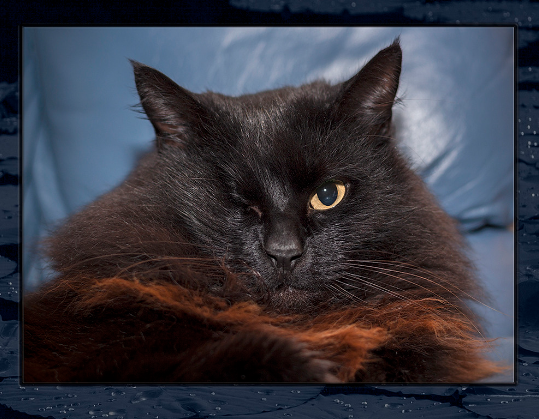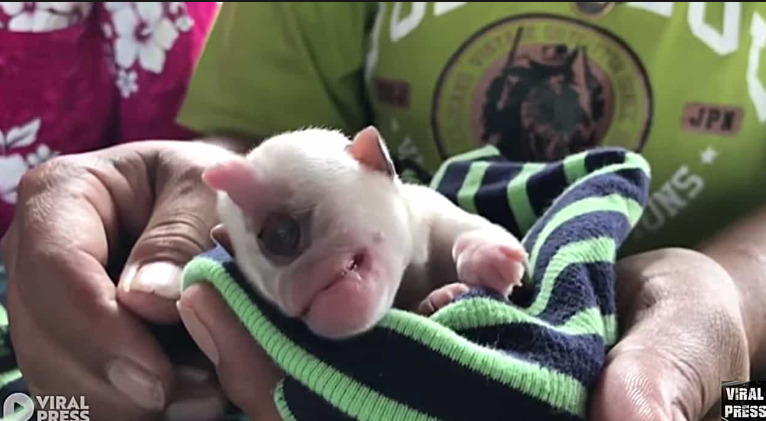The Fascination of One-Eyed Animals: A Look into Their Unique Adaptations
One-eyed animals have long captivated our imagination and stirred our curiosity. These remarkable creatures, with their distinctive appearances and stories of resilience, offer a glimpse into the extraordinary abilities of nature. In this article, we will explore the world of one-eyed animals, their adaptations, and the wonders they hold.

The cat with one-eyed
I. What are One-Eyed Animals?
One-eyed animals are creatures that possess only one functioning eye, either due to congenital factors, traumatic injuries, or medical conditions. They exhibit unique characteristics and adaptations that enable them to navigate their surroundings with remarkable abilities.
II. Causes of Monocular Vision
One-eyed animals can acquire monocular vision through various factors.
Congenital conditions, such as genetic abnormalities or developmental issues, may result in the absence or underdevelopment of one eye.
Traumatic injuries, such as accidents or attacks, can also lead to the loss or impairment of an eye.
Additionally, certain medical conditions, such as infections or tumors, may necessitate the removal of an eye for the animal's health and well-being.
III. Amazing Adaptations of One-Eyed Animals
One-eyed animals have evolved remarkable adaptations to compensate for their monocular vision:
A. Enhanced Depth Perception: Despite lacking binocular vision, these animals have developed mechanisms to perceive depth accurately. They rely on other visual cues, such as size, motion, and perspective, to estimate distances and navigate their environment effectively.
B. Wide Field of View: One-eyed animals often have an exceptionally wide field of view. Their single eye is strategically positioned, allowing them to have a broad range of vision and detect potential threats or opportunities from various angles.
C. Heightened Sensory Abilities: To compensate for the loss of vision, one-eyed animals often rely more on their other senses, such as hearing, smell, and touch. These enhanced sensory abilities enable them to perceive their surroundings more effectively and adapt to their environment.
IV. Examples of One-Eyed Animals in Nature
Numerous examples of one-eyed animals exist in the natural world, showcasing their ability to thrive despite their visual limitations:
A. Cyclops Shark: The cyclops shark, also known as a "one-eyed shark," exhibits a rare condition called cyclopia, which causes the fusion of its eyes into a single eye structure. This extraordinary phenomenon has been documented in various shark species, although it is extremely rare.
B. One-Eyed Cats and Dogs: Many cats and dogs have adapted to living with only one eye due to congenital conditions, injuries, or medical procedures. These resilient animals often lead fulfilling lives and form deep bonds with their human companions.
C. One-Eyed Birds: Some birds, such as owls or raptors, can adapt to monocular vision if they lose an eye due to injuries or accidents. Despite this visual impairment, they retain their impressive hunting skills and aerial agility.
V. Famous One-Eyed Animals
Several notable one-eyed animals have captured public attention and become symbols of resilience:
A. Nelson the One-Eyed Elephant Seal: Nelson, a male elephant seal, became famous after losing his eye in a fight with another male seal. Despite the injury, Nelson continued to thrive and became an emblem of strength and survival.
B. Pirate the One-Eyed Pug: Pirate, a pug dog, was born with only one eye due to a congenital condition. This adorable and charismatic canine captured the hearts of many with his playful spirit and became an internet sensation.
C. Cleyed the One-Eyed Owl: Cleyed, an owl who suffered a severe eye injury, was rescued and rehabilitated by a wildlife sanctuary. This majestic bird serves as a symbol of hope and the importance of conservation efforts.
VI. Human Perception and Cultural Symbolism
One-eyed animals have fascinated humans throughout history and have often been associated with cultural symbolism and mythology:
A. Historical and Mythological References: Ancient civilizations, such as the Greeks and Norse, featured one-eyed creatures in their myths and folklore. For example, the Cyclops in Greek mythology was a one-eyed giant with incredible strength.
B. Impact on Human Attitudes and Beliefs: One-eyed animals have influenced human perceptions and beliefs. They have been seen as omens, symbols of wisdom or strength, and have even inspired fictional characters in literature and media.
C. Representation in Art and Media: The allure of one-eyed animals has been depicted in various art forms, including paintings, sculptures, and literature. Their unique appearance and symbolism continue to inspire creative expression.
VII. Rehabilitation and Care for One-Eyed Animals
When one-eyed animals require medical intervention or rehabilitation, veterinarians and animal welfare organizations play a vital role in their care:
A. Veterinary Interventions and Procedures: Skilled veterinarians can perform surgeries, provide medical treatments, or offer supportive care to improve the quality of life for one-eyed animals. These interventions aim to alleviate pain, promote healing, and ensure their overall well-being.
B. Adopting and Caring for One-Eyed Pets: Many compassionate individuals choose to adopt one-eyed animals and provide them with loving homes. These dedicated pet owners understand the unique needs of these animals and provide them with a safe and nurturing environment.
C. Supportive Communities and Organizations: Various animal welfare organizations and online communities offer support and resources for owners of one-eyed animals. They provide guidance, share experiences, and raise awareness about the needs and capabilities of these special animals.
VIII. Ethical Considerations
The welfare and ethical considerations surrounding one-eyed animals involve discussions on quality of life, rehabilitation, and release:
A. Animal Welfare and Quality of Life: It is essential to prioritize the well-being and quality of life of one-eyed animals. Veterinarians and caretakers assess their individual needs, ensuring they have access to proper nutrition, medical care, and an enriched environment.
B. Debates Surrounding Rehabilitation and Release: In cases where one-eyed animals have been rescued or rehabilitated, there may be debates about their release back into the wild. These discussions weigh factors such as their ability to adapt, find food, and survive in their natural habitat.
C. Role of Education and Conservation Efforts: Educating the public about one-eyed animals and their unique adaptations can foster understanding and empathy. Additionally, supporting conservation efforts can help preserve habitats and protect these animals in the wild.

Dog born with 1 eyed
In conclusion, one-eyed animals are fascinating beings that demonstrate remarkable adaptations and resilience. Their unique abilities, inspiring stories, and cultural significance have captured the imagination of people around the world. By appreciating and understanding the experiences of these animals, we gain a deeper appreciation for the diversity and wonder of the natural world. Whether in the wild or as cherished companions, one-eyed animals continue to inspire us with their indomitable spirit and ability to thrive despite their visual limitations.